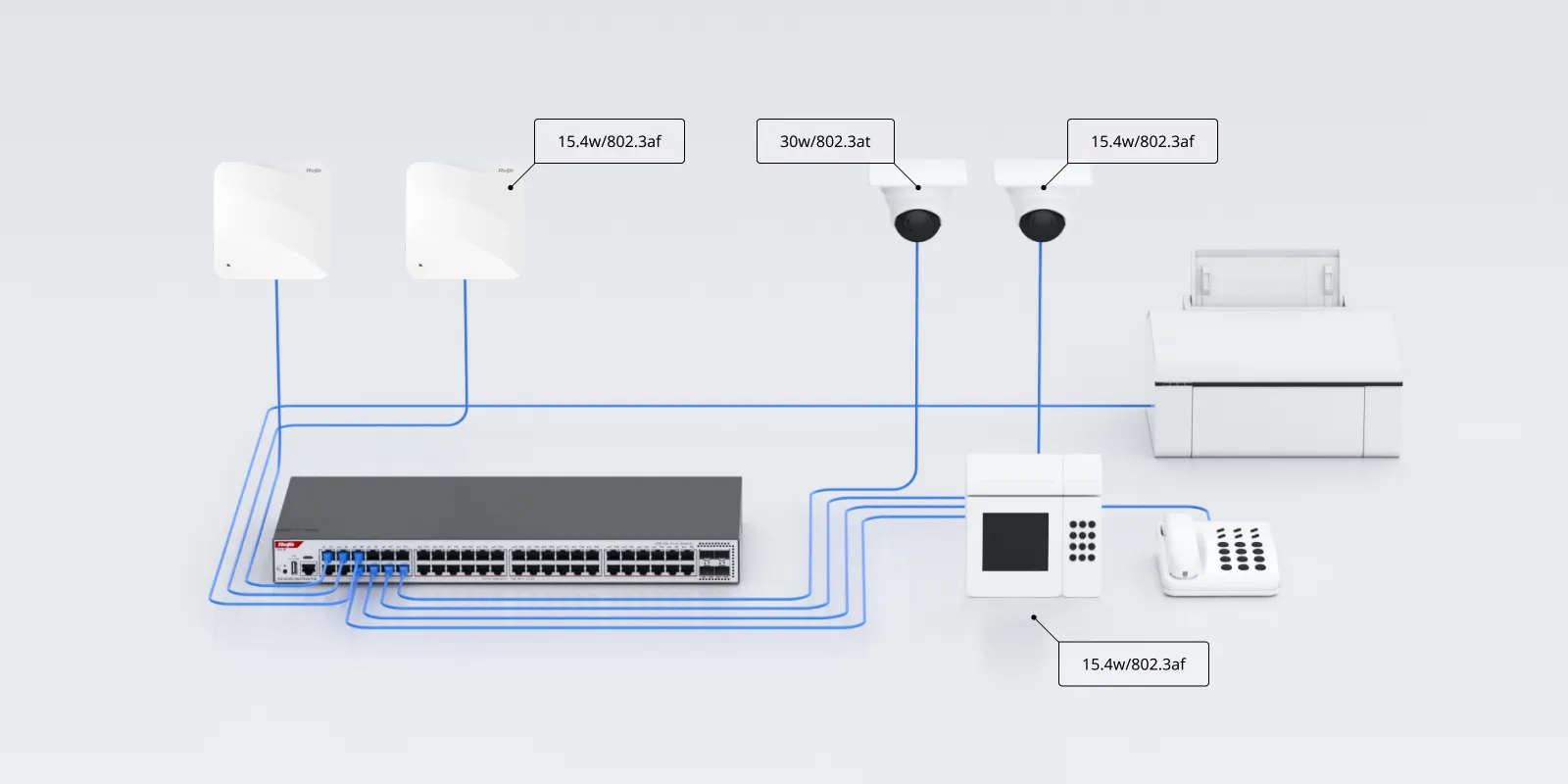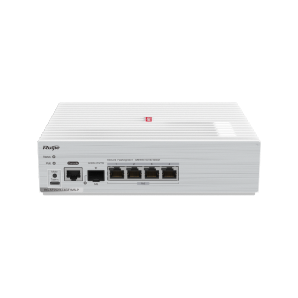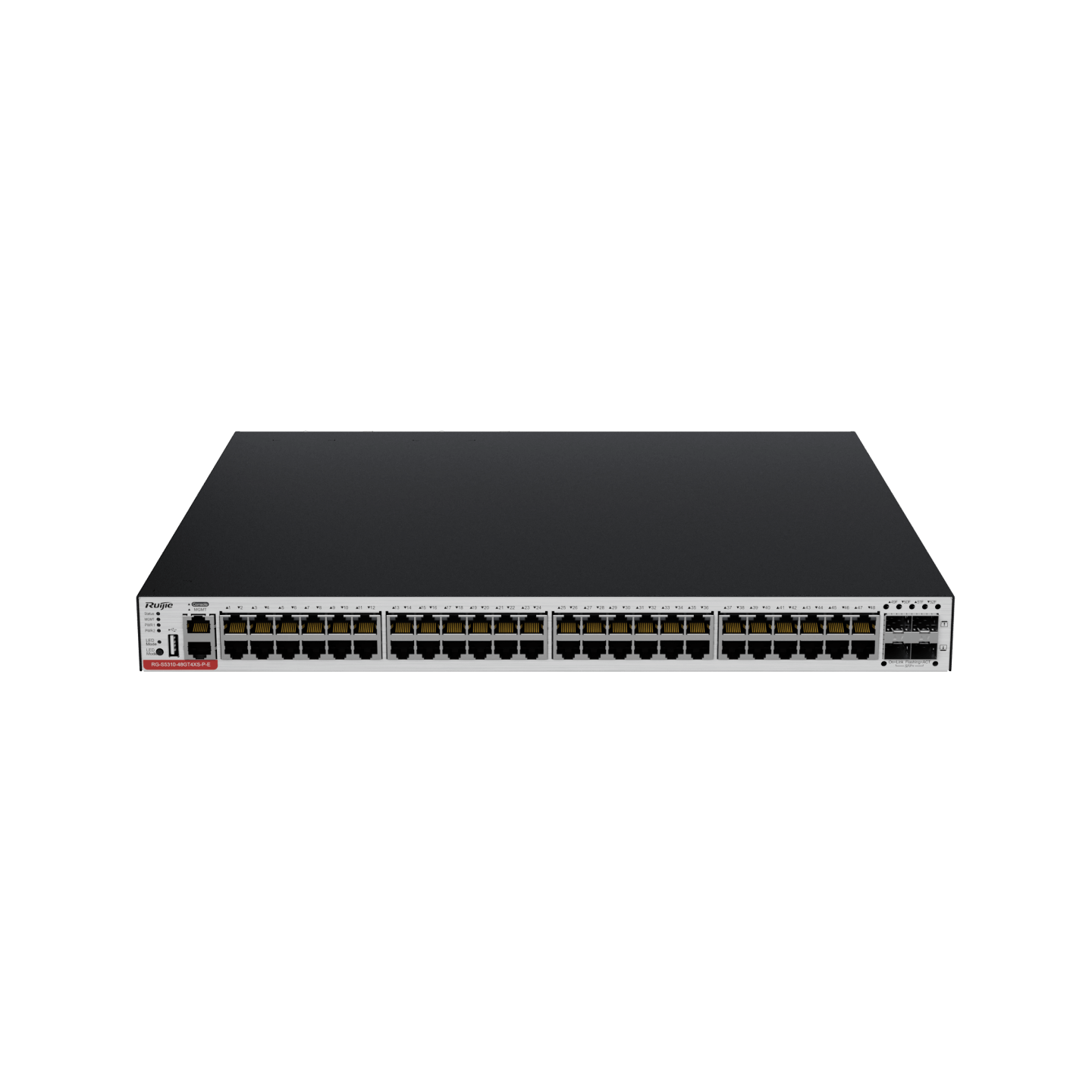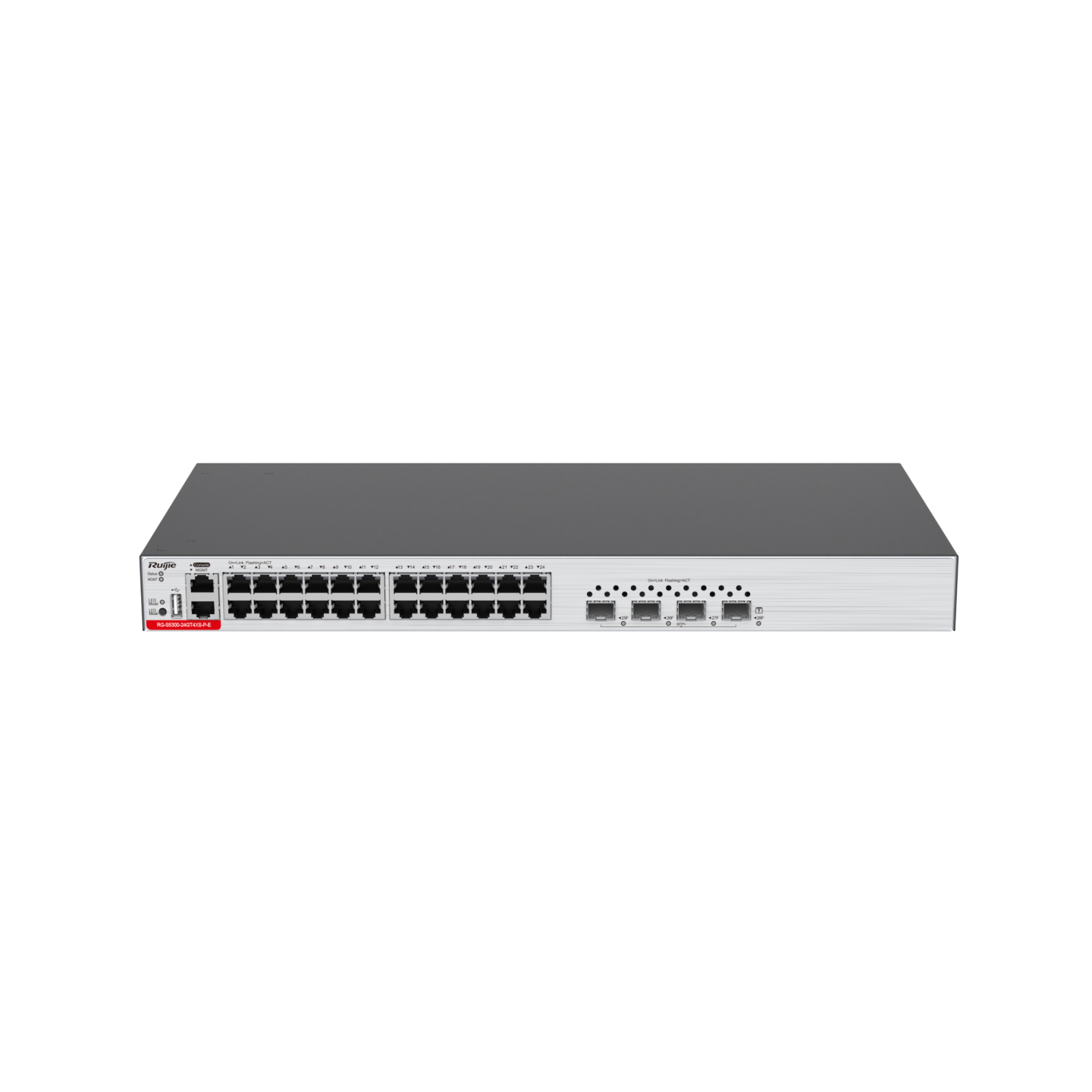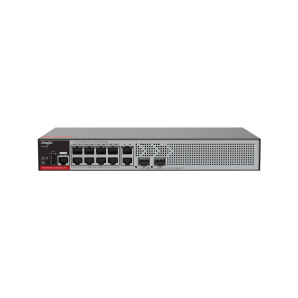I. Overview
As Internet of Things (IoT) technologies advance, smart terminals such as VoIP phones, video surveillance systems, and wireless Ethernet, have been widely deployed. These devices typically need a DC power supply, but they are often installed in locations without power outlets, making it difficult to use traditional AC or DC adapters. In addition, managing and powering multiple terminals on a large LAN poses a challenge to network administrators.
PoE offers a practical solution for powering these smart terminals. PoE allows both data and power to be transmitted over Ethernet cables, which reduces costs, simplifies installation, and enhances the stability of power supply and maintenance efficiency. Originally used in application scenarios including wireless LANs, network monitoring, and VoIP, PoE has now expanded to new areas such as retail, IoT, and smart cities.
This article covers the basic concepts and working process of PoE, as well as its key benefits in current network environments.
Ⅱ. What Is PoE?
PoE provides DC power to IP-based devices, such as VoIP phones, access points (APs), and web cameras, while transmitting data signals. This is achieved using the existing Ethernet Cat5 cabling without any modifications. PoE technology maintains the security of existing cabling systems while ensures normal operation of the network, which helps minimize costs.
A complete PoE system consists of the Power Sourcing Equipment (PSE) and Powered Devices (PDs). A PSE refers to an Ethernet switch, a router, or other network switching device that supports the PoE function. In wireless network projects, a PD mainly refers to an AP.
Ⅲ. How Does PoE Work?
After a PSE is deployed, the PoE process includes the following phases:
1. Detection: A PSE transmits a low voltage on a port and detects whether the cable is connected to a PD that supports IEEE 802.3af/at standard.
2. Classification: Once a PD is detected, the PSE classifies the PD and evaluates the power required by it.
3. Power up: In a short startup period (typically less than 15 µs), the PSE gradually increases the voltage from 0 V to a stable 48 V DC power supply.
4. Power supply: The PSE provides the PD with stable 48 V DC power. The power consumption of a PD varies depending on its power needs and the PoE standard being used (802.3af, 802.3at, or 802.3bt).
5. Disconnection: When a PD is disconnected from the network, the PSE quickly stops supplying power (within 300 ms to 400 ms) and starts the detection process again to check whether another PD is connected.
IV. What Are the Benefits of PoE?
1. Ease of installation: PoE allows for easy deployment of network devices without relying on fixed power outlets, making it ideal for buildings with outdated or limited power infrastructure.
2. Simplified cabling and lower costs: A PoE device only needs one Ethernet cable for both power and data, which simplifies cabling, saves space, and reduces installation and maintenance costs. It also makes use of existing network infrastructure, centralizing power through switches.
3. High security and reliability: Before powering on devices, PoE conducts a power check (also called handshake), to ensure compatibility. In emergency situations such as power outages, PoE can provide reliable power supply. For example, in equipment rooms with PoE-powered security cameras and access control systems, these systems can continue to operate even during power outages. In addition, a PSE only outputs power when detecting a device that needs power, thereby eliminating the risk of electricity leakage.
4. Easy management: Network administrators can use the Simple Network Management Protocol (SNMP) to remotely monitor and control PoE devices. PoE supports both legacy and PoE devices running on the same network in an automatic and secure manner, allowing them to work together seamlessly. On a WLAN, PoE makes it easier to test and deploy APs, allowing for quick and flexible installation.
Ⅴ. Ruijie PoE Switches
Ruijie 24-port PoE switches RG-S2915-24GT4MS-P-L and RG-S5310-24GT4XS-P-E, as well as 4-port in-room access switches RG-SF2920U-4GT1MS-P support PoE power supply. A device's support for PoE is determined by its hardware. You cannot convert a non-PoE device into a PoE device just by upgrading the software. The following figure shows the application scenarios of PoE. The RG-S5310-E series switches support PoE and can power different types of terminals. For more information, feel free to contact us.

